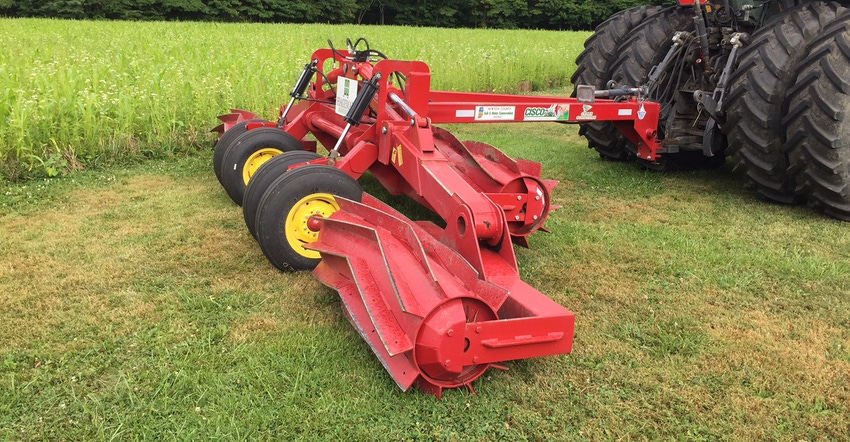April 6, 2018

By Don Donovan
Cover crops have become a popular topic of conversation at the coffee shop and field days. Do you use cover crops? What species have you planted? Have you tried planting green?
These are just some questions farmers are asking each other. With Indiana having more than 1.2 million acres of cover crops in 2017, their use continues to be a major discussion topic. Several farmers are taking another step in the soil health journey by using a roller crimper to terminate cover crops and put them down on the soil surface.
Farmers using roller crimpers are doing so for several reasons. The primary purpose is to terminate certain cover crop species, such as cereal rye or hairy vetch. Organic farmers have used roller crimpers to terminate cover crops, but now nonorganic farmers are finding benefits, too. Once cereal rye has reached the boot stage, it can be terminated easily with the pass of a roller crimper. If total termination isn’t obtained, a light rate of herbicide will complete the process.
Why roll covers?
If you’re new to cover crops, you might ask why it matters if you roll cover crops down onto the soil surface. Long-term users are finding many benefits to having cover crop residue on the soil surface. A heavy mat of cereal rye residue prevents sunlight from reaching the soil surface, which keeps many weed species from growing. This mat of residue is effective in helping control some difficult weeds such as marestail and waterhemp, because they need sunlight to germinate and grow.
Midsummer in Indiana usually means periods of dry weather, which can lead to crop stress and decreased yield. A heavy mat of terminated cover crops will protect the soil surface, decreasing evaporation and keeping more moisture in the soil during periods of dry weather.
This extra moisture may be just enough to keep your crop from being stressed, fending off any loss of yield. What is a half-inch rain worth in July or August? It may mean a yield difference that determines whether you break even or profit. Protect your soil with a terminated cover crop!
Other benefits
A mat of terminated cover crops also protects the soil from excessive temperatures during hot weeks. Soil temperature can differ by 20 to 25 degrees between protected and unprotected soil.
Why does this matter? Plant roots and soil microbiology like relatively constant living conditions — moisture, temperature and soil oxygen levels. The microbiology in the soil especially doesn’t like extremely high temperatures.
Microbiology is the mechanism that makes nutrients available for plant roots to take them up. When the soil gets hot, the microbiology either shuts down or moves deeper to cooler soils. No microbiology and no available nutrients means a stressed plant and less yield, which means less potential profit. Again, that mat of terminated cover crops may be the difference between a breakeven yield and a profit.
If you’re interested in trying a roller crimper to terminate or roll down cover crops, several soil and water conservation districts rent the tool. Check with your local Natural Resources Conservation Service or SWCD office for more information on cover crops, their benefits and making them work in your operation.
Donovan is a district conservationist with the NRCS. He writes articles on behalf of the Indiana Conservation Partnership.
You May Also Like




